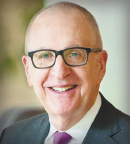The number of first-year students in U.S. medical schools increased by 1.7% in the 2020 academic year, according to data released recently by the Association of American Medical Colleges (AAMC). Although the increase was modest, the number of students applying to medical school for the upcoming 2021 academic year shows substantial growth, up by approximately 18% from the same time this past year.

David J. Skorton, MD
“The increased interest in medicine comes at a crucial moment. Even before COVID-19, the United States was facing a significant projected shortage of physicians,” said David J. Skorton, MD, AAMC President and Chief Executive Officer. “The pandemic is spotlighting the extraordinary services that physicians provide on the front lines. It’s heartening to see that more students want to pursue a career in medicine in order to serve their communities and make a difference.”
Diversity of the 2020 Entering Medical School Class
Although there were declines or little growth in the number of applicants from most underrepresented groups this year, the data indicate the nation’s medical schools continue to make gradual gains in enrolling more racially and ethnically diverse classes.
The number of Black first-year students increased by 10.5%, to 2,117 nationwide. Black students made up 9.5% of first-year students in 2020, up from 8.8% The number of first-year students of Hispanic, Latino, or Spanish origin increased 8.6%, to 2,678. The number of American Indian or Alaska Native first-year students rose 7.8%, to 248.
In 2020, women made up 53.4% of applicants, 53.6% of first-year students, and 51.5% of total enrollment. The proportion of women in all three categories has increased annually in recent years. Among first-year students in 2020, the number of women increased and the number of men declined, continuing a 5-year trend.

